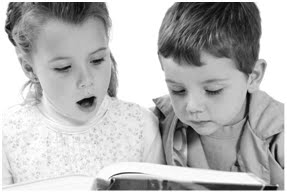
Today, my favorite readers to use at the Montessori lower elementary age (6-9) are the Junior Great Books, and I cannot say enough good things about them. The Junior Great Books program ties perfectly with the Montessori philosophy as it incorporates critical thinking, rather than simply choosing the best answer to multiple-choice questions. The first three levels (appropriate for lower elementary) are meant to be read aloud by the teacher.
I used the Junior Great Books with my entire Montessori lower elementary class. Because the teacher reads the stories at the lower elementary level, I was able to include even my special needs non-readers.
Teacher Tested Suggestions for Montessori Lower Elementary Reading Programs
They actually had a chance to feel like they were successful in reading when I used the program. All 32 students in my LE class loved it and would beg for more. I even had children from other classrooms ask if they could come to me for reading! Using the Junior Great Books along with the Montessori reading/phonics program also works very well together.

Another series of readers that I highly recommend is the Bring the Classics to Life leveled readers. Montessori would have appreciated the great ways in which classic children’s literature is made accessible for such young and eager readers through this program. There are definitions of key words and how to use them in context. Although there are multiple choice questions, there are ample opportunities for critical discussions. The stories included will appeal to boys and girls alike.
Finally, I have also had wonderful success with increasing fluency by using the Read Naturally/One Minute Reader program with my Montessori lower elementary students, as well as in private tutoring. Fluency and comprehension have increased quickly and even the most reluctant readers enjoy challenging themselves and working individually at their own pace. I have to admit that I was initially extremely skeptical when I first attended staff development meetings about this program. However, after implementing it and seeing the remarkable progress students made in fluency, I quickly changed my mind and have gone on to recommend it to Montessori and public school teachers alike, as well as to parents and homeschoolers.
Some related NAMC blogs:
- Montessori Storytelling: True Stories in the Elementary Environment
- Montessori Storytelling: True Stories in the Early Childhood Environment
- Montessori Curriculum Explained: Language Arts Materials, Activities and Philosophy
- Montessori Education Builds Development Needed Before Reading
- Tall Tales Activities for the Montessori Elementary Classroom
- Reading Aloud to Children: Modeling and Bonding
- Reading Aloud to Children: Tips for Happy, Successful Readers
- Reading Aloud to Children: Reading the Montessori Way
As much as possible, NAMC’s web blog reflects the Montessori curriculum as provided in its teacher training programs. We realize and respect that Montessori schools are unique and may vary their schedules and offerings in accordance with the needs of their individual communities. We hope that our readers will find our articles useful and inspiring as a contribution to the global Montessori community.
© North American Montessori Center - originally posted in its entirety at Montessori Teacher Training on Tuesday, July 19, 2011.
© North American Montessori Center - originally posted in its entirety at Montessori Teacher Training on Tuesday, July 19, 2011.

Thanks for your article Michelle. We are trying to decide on a good reading program to invest in and I would love to learn more about how you do JGB in your room. Would you be willing to email??
ReplyDeletekristen@flagmontessori.com